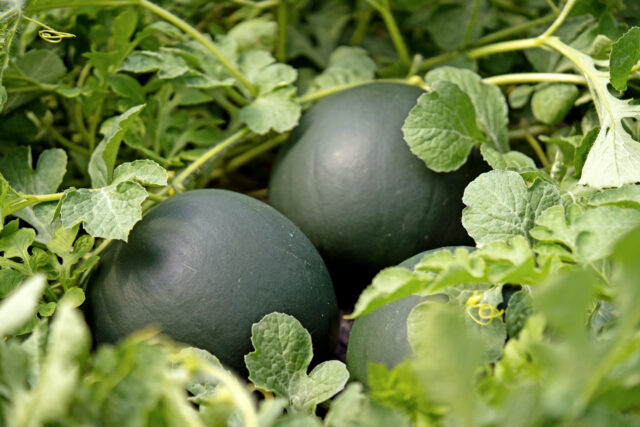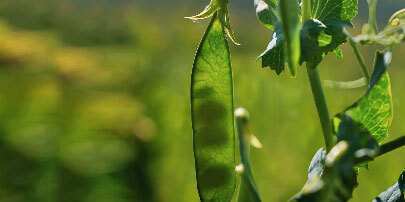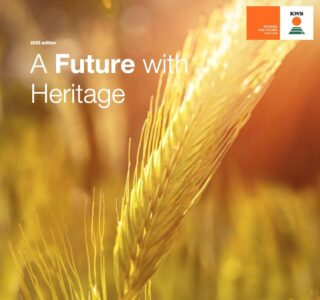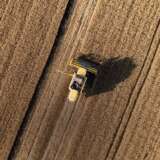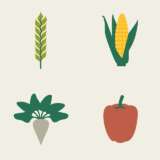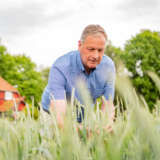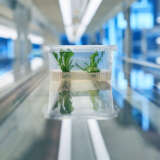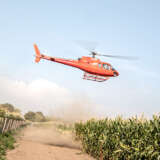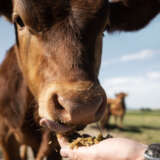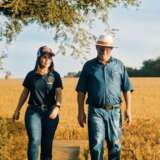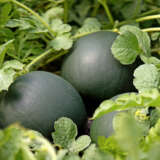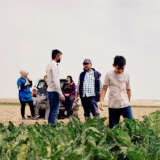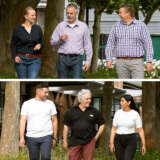KWS watermelons
are
ripe for Turkey.
They come with or without seeds, in an enormous variety of weights and sizes. They can be oval or round, and while some have a particularly high sugar content others are less sweet: watermelons. In the coming years, farmers in the Turkish province of Adana and Antalya will be testing KWS varieties that have proven successful in breeding programs in Spain and Brazil. The objective: market maturity. Expanding into the Turkish and nearby markets for the popular cucurbit is part of KWS’s growth strategy in the Vegetables business segment.
Adana is the “vegetable garden” of Turkey — when it comes to fruits that come from outdoor production. Antalya leads the way for greenhouse-grown vegetables, with a total area of around 25,000 hectares — local indoor cultivation accounts for around 35 percent of the vegetables and fruit produced nationwide. “Seed companies aiming to set up vegetable breeding operations in Turkey will find the best conditions in the area around Antalya,” explains Remzi Doğan, Head of Vegetables Breeding in Turkey. The new site, acquired in 2022, has a workforce of approximately 25 employees who are currently working on three of the company’s most important vegetable crops: tomatoes, peppers and cucumbers. The facility covers an area of four hectares and includes greenhouses, a plant-raising facility, warehouses and office buildings.
Parallel to the beginning of its seed breeding activities, KWS is also building up product development and sales in the Eurasian country. Doğan points to future growth opportunities for the company: “Turkish people eat relatively large amounts of vegetables because of their traditional cuisine.” Average per capita consumption is roughly 150 kg. The watermelon, popular with the local population as well as millions of tourists, is one of the crops that make the market attractive. Turkey is one of the world’s largest watermelon producers, with a yearly output of almost 3.6 million tons. Estimated seed market volume: between 8 and 10 million euros. “That’s only about one-sixth compared with the market for tomatoes — but watermelon makes high breeding demands and is a profitable business for seed producers,” says Doğan, describing the economic opportunities for KWS to take a sweet slice of the market potential in the future.
Testing where watermelons should grow in the futur
“Turkey is one of the first countries where we sell watermelon seed. However, we are continuously working further to develop a fully mature portfolio of varieties. For this, we still have extensive breeding work and testing ahead of us,” says Doğan, looking ahead to the future. On average, it takes five to eight years before a new variety is launched to market. The source material comes from the KWS breeding programs in Brazil and Spain. The most effective approach is to test the breeding stock subsequent to a development period under local conditions on Turkish trial fields — in the area where they will be grown in the future. The trials are being supported by farmers and plant raisers who have already had positive experiences with KWS products: “We would like to use the market recognition we have in Turkey for sugarbeet, corn and spinach seed as a reference for building our future vegetable business,” Dogan tells us.
One of the plant raisers who is testing the KWS watermelon varieties is Mümin Sahin, a 57-year-old agricultural engineer who has been working in agriculture for more than three decades. At his agricultural company Bereket Fide in Antalya, vegetables are grown in greenhouses on an area of roughly 45 hectares. “We produce a total of 63 to 70 million seedlings a year. In addition to tomatoes, eggplants and cucumbers, we also grow around twelve million watermelons,” he says.
Sahin knows KWS from his more than 30 years of experience in the industry, and explains how he came to work with the company: “I heard from my colleagues that KWS had gone into the vegetable seed business. My impression of the company is a good one, and I’m familiar with the German culture. In the 80s, I lived in Germany for a while and did an internship there.”
We produce a total of 63 to 70 million seedlings a year. In addition to tomatoes, eggplants and cucumbers, we also grow around twelve million watermelons.
Mümin Sahin | Plant raiser from Antalya
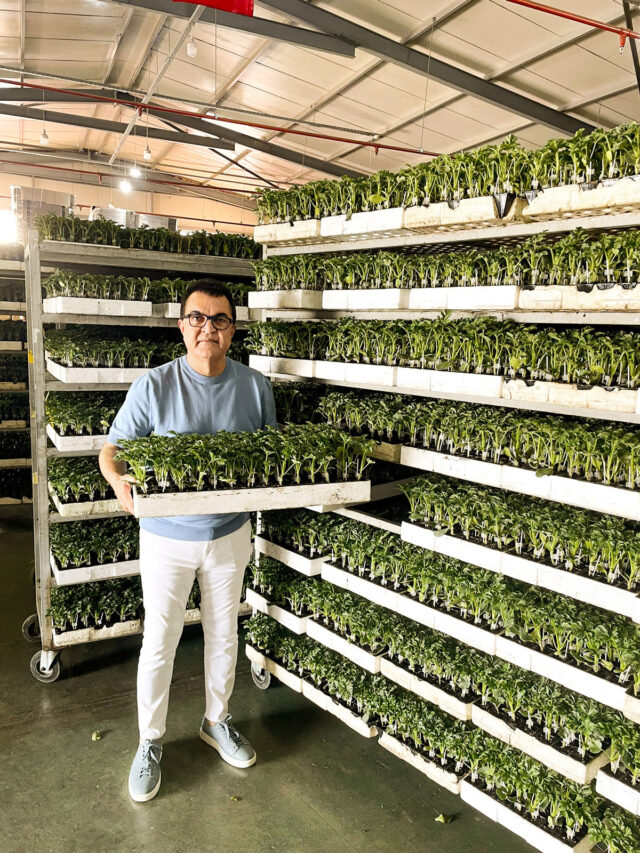
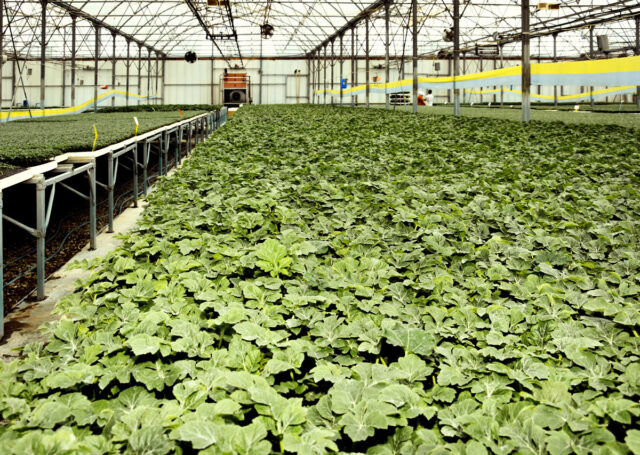
Mümin Sahin (57) has been working in the farming industry for more than three decades in his agribusiness Bereket Fide in Antalya, Turkey.
High-yield, resistant and crisp varieties
The KWS test candidates are in good company on Sahin’s farm: 60 percent of his greenhouses are reserved for watermelons from January to June. “Watermelon is the crop with the highest grafting rate,” he explains — about 95 percent of watermelons on the market are grafted. For his watermelons, he combines the positive characteristics of two plants by using a plant with a strong root system and high disease resistance as the rootstock for a prime-quality scion that will produce the fruit. He describes this step as the most important part of his production process, and explains that planting the rootstock and the scion at the right time, along with planning and correct grafting technique, are the key elements. In regards to the source material supplied by KWS, he notes that “We need to use high-quality and homogeneously germinated seed. It requires a certain degree of tolerance in terms of disease resistance, for example to Fusarium or nematodes. If the seed has these characteristics, we can produce without any problems.” Other important agricultural parameters that KWS breeders must take into account when developing new varieties are high yield, early ripeness and increased tolerance
to drought.
With the establishment of our new location, we have taken the first big step in vegetable breeding in Turkey and on the whole. I’m looking forward to being able to offer a competitive portfolio in Turkey in just a few years’ time.
Remzi Doğan | Head of Vegetables Breeding in Turkey
On the other hand, the production of watermelons also depends on the specific requirements of consumers: They expect crunchy fruit with a high sugar content, pinkish reddish flesh, and the color of the seeds should be rather dark. “Consumers often associate light-colored seeds or too light-colored stripes on the outer skin with immaturity,” adds KWS Vegetables Breeding Head Doğan. There is currently also a trend of processing companies slicing the watermelons and cutting them into smaller pieces. This has an impact on requirements such as shelf life, crispness and taste. “Shape is also an important factor in transport. Longer oval melons have the advantage that their weight is distributed over a larger surface area, making them less susceptible to pressure. Of course, box-shaped melons would be the best, to make good use of the space,” agree Sahin and Doğan with a twinkle in their eyes.
“With the establishment of our new location, we have taken the first big step in vegetable breeding in Turkey and on the whole. I’m looking forward to being able to offer a competitive portfolio in Turkey in just a few years’ time,” says Doğan. Plant raiser Sahin is also confident that the partnership will pay off for all parties: “I wish KWS every success in the vegetable business and look forward to continuing our working relationship”.
A brief note on the watermelon
From bitter to sweet — in 5,000 years.
Mark Twain once called it the “fruit of the angels”. But the angels would have pulled quite a face if they had bitten into the “original melon”. Archaeologists found remnants of watermelon seeds in a 5,000-years-old settlement in Libya for the first time. The wild variety was just 50 millimeters in diameter, weighed no more than 80 grams, could only be opened with a hammer, and its green flesh was extremely bitter. It took many generations of selection and breeding to turn it into the sweet, red-fleshed summer snack we know today. While the wild watermelon contained only 1.9 percent sugar, the modern watermelon is
And many times larger and heavier. Watermelons — like cucumbers and other melons — belong to the family of the cucurbits and are, therefore, botanically classified as a vegetable.
